|
Dalehall, Burslem
"Church met its Waterloo with
buried treasure"
  
click the
"contents" button to get back to the main index & map
next: Hulton Abbey
previous: Sir Nigel Gresley's canal
|
Historian Fred Hughes
writes....
There are currently seven people registered in the Potteries phone book
with the surname Burslem, but whether any of them are related to the first
man who called himself after the place is not known.
“The antiquary John Ward made a few guesses in 1843 as to the genesis of
the name,” says historian Steve Birks. “But as he himself admitted, it is
all conjecture.”
Steve and I have come to Dalehall, one of Burslem’s earliest settlements,
to trace these origins.
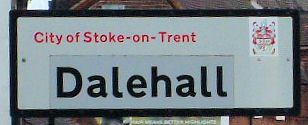
|
“Ward comes across the name in the Domesday Book,” Steve informs me. “He
argues that the Norman entry – Barcardeslim – was one of a number of
spellings from the Saxon. He himself opts for Burwardeslime which he
translates as a dwelling near a lime forest, and thinks the chief resident
more than likely called himself after the place where he lived. The First
record of a Burslem appears to have been Thomas in 1416. But the first
Burslem surname connected with the town was John, a foreman of the local
court in Elizabethan times. His great-granddaughter, Margaret married
Gilbert Wedgwood about 1612 and started the famous Wedgwood dynasty.”
John Burslem occupied a fine house known as Dale Hall.
“It’s impossible to pinpoint the exact location,” says Steve, “Other
than it was near the present St Pauls Church. It stayed with the
Burslem’s until the end of the 1600’s. But by the early 18th
century it had been abandoned.”
The location was pleasantly rural. But a hundred years later industry
and community-development changed all that.
Steve continues. “According to the Victoria County History, by 1832 there
were several streets in Dalehall including Union Buildings in Newport
Lane, Mount Pleasant Buildings in Reid Street, and Fountain Buildings
built by Enoch Wood for his workers. But the giant leap forward was the
erection of the magnificent Gothic Church of St Paul in 1828; a giant
edifice built in Hollington stone in the Perpendicular style and
distinguished by a 115 foot tower with pinnacles.
|
Shrewdly, when the foundations were laid, the founders built chambers into
which they concealed many ceramic treasures for posterity. However the
church was demolished in 1974 by which time the parishioners had
apparently forgotten or dismissed the value of this wealth
“It was a shame the old church was pulled down,” says Steve. “Its
replacement is a most uninspiring shed-like building which at the best
looks like a row of racing-pigeon lofts.”
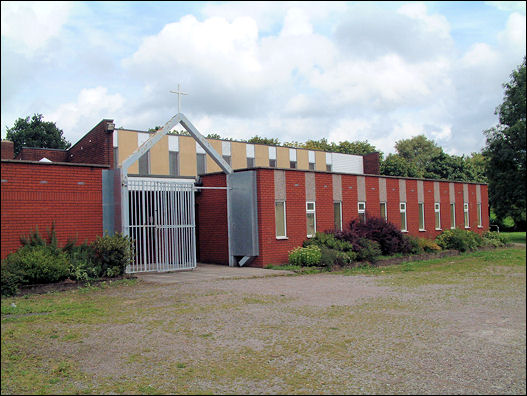
St. Paul's parish
church - Burslem
Church Square
photo: August 2008
this church replaced the original 1828
church which was demolished in 1974
Oh dear! I wonder if Rev Robert Johnson shares this view of his priestly
workplace.
“I understand Steve’s point of view,” says Robert, “But I would submit
that if you compare the old St Paul’s with any church in Stoke on Trent
they would all pale in its shadow. St Pauls’ was undoubtedly a remarkable
edifice, built with big ideals with an important school established
alongside it. It had one of the longest aisles in Britain making it very
popular with weddings, and it owed its existence to it being a Waterloo
Church.”
There were over 600 so-called Waterloo Churches constructed during the
early 19th century using funds from the 1818 Church Building Act
initiated by a greatly relieved government who made available £1 million
in recognition of victory over Napoleon Bonaparte. Some social realists
though considered it to be a backhander implemented to restrain the
spread of non-conformist religion viewed by a nervous Tory government as
being associated with radical politics. The Waterloo money, granted only
to the Anglican Church, was a means of halting the rise of dissident
working classes.
Robert resumes. “Money for St Pauls was matched by Burslem’s new rich as
well. You must remember this was one of Stoke on Trent’s boom periods
which generated a manufacturing-based powerful middle-class.”
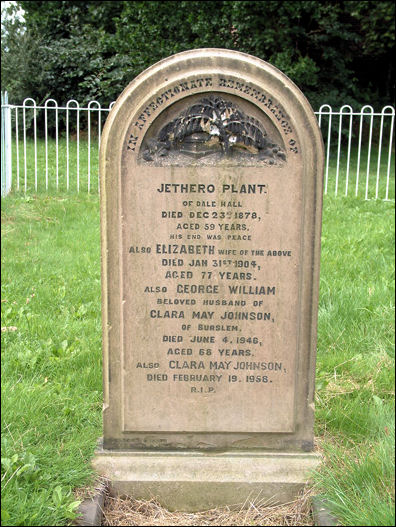
Grave in the grounds of St. Paul's Church
"In affectionate Rememberance of
Jethero Plant of Dale Hall
died Dec 23rd 1878
aged 59 years"
And so St Pauls grew from affluence with worshippers regularly filling its
massive capacity. They thought it would last forever until the event came
that led to the downfall of the grand Gothic pile. Sadly it is a cheerless
tale of inexperienced management.
“By the 1950’s attendance had slumped,” recalls Robert. “And in 1974 the
building was in poor condition with the roof needing urgent repairs.
Though the parishioners managed to raise £20,000, a full examination put
the renovation cost nearer £250,000. It was therefore cheaper to
demolish it and build a new one. The big mistake was signing over
possession rights to the contractor who subsequently uncovered the
hidden treasures in the foundation chambers. As a result of the sales of
these he became a millionaire.”
The irony resonates. Had the parishioners recalled the whereabouts of
these fabulous artefacts hidden beneath their feet all those years, there
would have been more than enough money to repair the church and it would
probably still be standing. Robert however is gracious in the criticisms
of the modern church, for he has a deep-founded love for it.
“Its community activity is developing and there’s enough surrounding land
for a sizable asset as the needs arise,” he says. “The church has a
tranquil mood inside. And you can feel that it is completely at peace with
itself.”
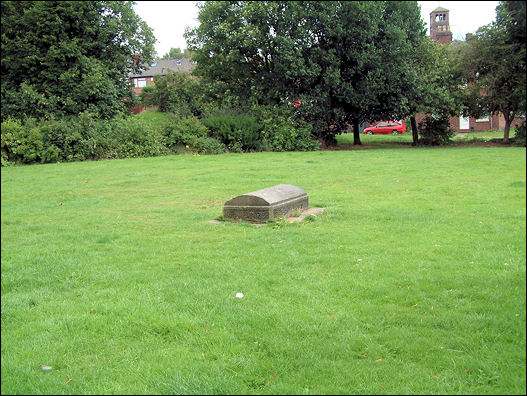
Grave of a past vicar of St. Paul's
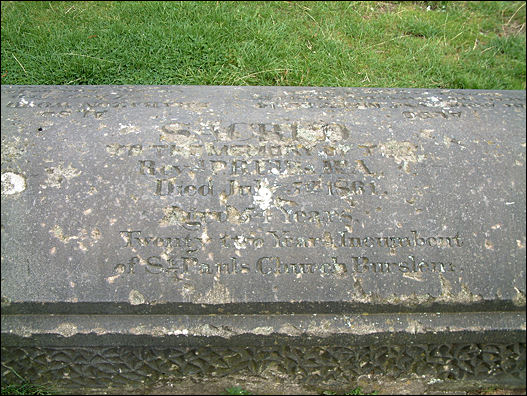
"Sacred to
the memory of the
Revd P. B. Ellis MA
died July 5th 1861
Aged 54 years
Twenty Two years Incumbent
of St. Paul's Church Burslem"
 more on
Dalehall
more on
Dalehall
|
![]()
![]()
![]()